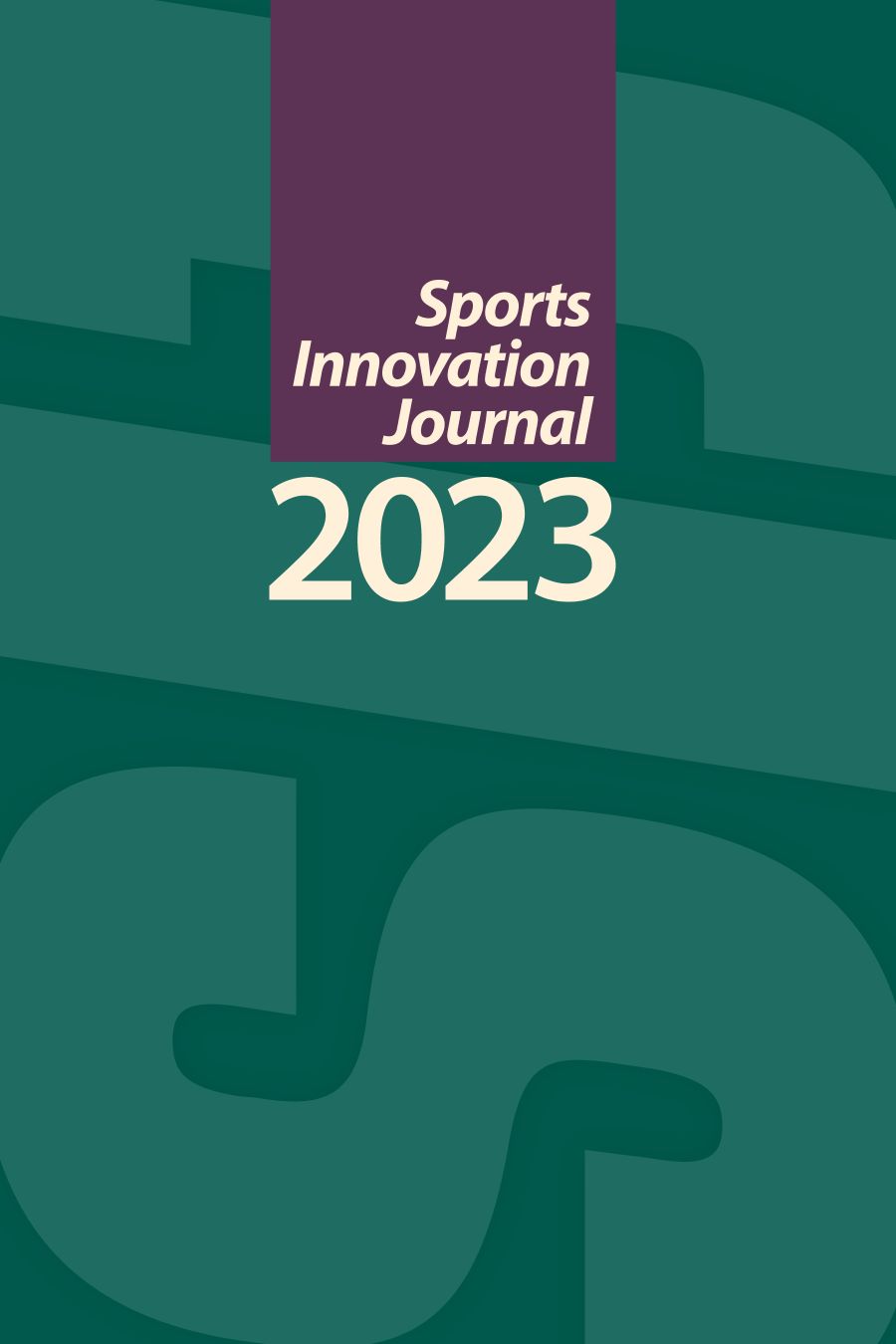The Change in Test Cricket Performance Following the Introduction of T20 Cricket
Implications for Tactical Strategy
DOI:
https://doi.org/10.18060/26438Keywords:
Cricket, Batting, Performance Analysis, Match Strategy, Coaching, Sports InnovationAbstract
International cricket has evolved from predominantly Test cricket, to shorter formats of competition. With the high player overlap between formats, the introduction of Twenty20 (T20) cricket is proposed to have influenced Test cricket and therefore the tactical strategies coaches and players should attempt to implement. The aim of this study was to identify the change in specific Test cricket performance metrics following the introduction of T20 cricket across a 20-year period (2000-2020). A total of 667 matches involving the top eight International Cricket Council (ICC) Test-cricket nations were analyzed. Overall, the introduction of T20 cricket has been associated with a change in the way in which Test cricket is currently played. Results identified significantly ( p < 0.001) more runs being scored by sixes and less by fours. A significant (17.4%; p < 0.001) decrease was also present in the percentage of Test matches ending in draws (23.5% in 2000 to 6.4% in 2020). Run rates increased for five teams (India, New Zealand, Pakistan, South Africa, and Sri Lanka), remained constant for one team (West Indies), and decreased for two teams (Australia, England) across the entire period studied. However, there was no change in the number of days Test matches lasted, with the average number of days continuing to last into day five (4.5 decreasing to 4.3). Findings highlight that improving the ability to strike a greater number of sixes, increase the overall run rate, and facilitate strike rotation when batting to be a focus for coaches and players alike. Future studies should ascertain whether the introduction of T20 has had an effect on One Day International (ODI) performance variables while further considering the impact of home advantage and team quality, to facilitate enhanced tactical and strategic decision-making.
References
Allsopp, P. (2005). Measuring team performance and modelling the home advantage effect in cricket. Doctoral dissertation, Swinburne University of Technology.
Ammon, E. (2019). ECB supports plans to reduce Test matches to four days. Retrieved from The Times: https://www.thetimes.co.uk/article/ecb-supports-plans-to-reduce-test-matches-to-four-days-rtjvphkpj
Barron, D., Ball, G., Robins, M., & Sunderland, C. (2018). Artificial neural networks and player recruitment in professional soccer. PloS One, 13. doi.org/10.1371/journal.pone.0205818.
Bhattacharjee, D., Pandey, M., Saikia, H., & Radhakrishnan, U.K. (2016). Impact of power play overs on the outcome of Twenty20 cricket match. Analysis of Applied Sport Science, 4(1), 39-47. DOI: 10.7508/aass.2016.01.007
Carling, C., Williams, A.M., & Reilly, T. (2005). The handbook of soccer match analysis. Oxon, United Kingdom: Routledge.
Cannonier, C., Panda, B., & Sarangi, S. (2015). 20-over versus 50-over cricket: Is there a difference? Journal of Sports Economics, 16(7), 760-783. DOI: 10.1177/1527002513505284.
Dewart, N., & Gillard, J.W. (2019). Using Bradley-Terry models to analyse test match cricket. IMA Journal of Management Mathematics, 30(2), 187-207. DOI: 10.1093/imaman/dpx013.
Douglas, J.M., & Tam, N. (2010). Analysis of team performances at the ICC World Twenty20 Cup 2009. Journal of Performance Analysis in Sport, 10(1), 47-53. DOI: 10.1080/24748668.2010.11868500.
Eaves, S.J., Hughes, M.D., & Lamb, K.L. (2008). Assessing the impact of the season and rule changes on specific match and tactical variables in professional rugby league football in the United Kingdom. International Journal of Performance Analysis in Sport, 8(3), 104-118. DOI: 10.1080/24748668.2008.11868452.
ECB. (2019). ECB announces Men's Central Contracts for the 2019/20 season. Retrieved from ECB: https://www.ecb.co.uk/england/men/news/1349647/-ecb-announces-men-s-central-contracts-for-the-2019-20-season.
Forrest, D., & Dorsey, R. (2008). Effect of toss and weather on County Cricket Championship outcomes. Journal of Sports Sciences, 26(1), 3-13. DOI: 10.1080/02640410701287271.
Hopkins, W.G. (2004). How to interpret changes in athletic performance tests. Sports Science, 8, 1-7.
ICC. (2020). Men’s T20 Team Rankings. Retrieved from https://www.icc-cricket.com/.rankings/mens/team-rankings/t20i.
ICC. (2021a). ICC Test Match Playing Conditions. Retrieved from https://resources.pulse.icc-cricket.com/ICC/document/2021/05/23/33c2d68e-8b38-4804-bcc4-daa8da8ad362/ICC-Standard-Test-Match-Playing-Conditions-May-2021.pdf.
ICC. (2021b). Historical rankings. Retrivied from https://web.archive.org/web/20121107124239/http://www.icc-cricket.com/match_zone/historical_ranking.php
Irvine, S., & Kennedy, R. (2017). Analysis of performance indicators that most significantly affect international Twenty20 cricket. International Journak of Performance Analysis in Sport, 17(3), 350-359. DOI: 10.1080/24748668.2017.1343989.
Lenten, L.J. (2008). Is the decline in the frequency of draws in test match cricket detrimental to the long form of the game? Economic Papers, 27(4), 364-680. DOI: 10.1111/j.1759-3441.2008.tb01050.x.
Lohawala, N., & Rahman, M.A. (2018). Are strategies for success different in test cricket and one-day internationals? Evidence from England-Australia rivalry. Journal of Sports Analytics, 4(3), 175-191. DOI: 10.3233/JSA-180191.
Moore, A., Turner, D. J., & Johnstone, J. A. (2012). A preliminary analysis of team performance in English first-class Twenty-Twenty (T20) cricket. International Journal of Performance Analysis in Sport, 12(1), 199-207. DOI: 10.1080/24748668.2012.11868593.
Najdan, M. J., Robins, M. T., & Glazier, P. S. (2014). Determinants of success in English domestic Twenty20 cricket. International Journal of Performance Analysis in Sport, 14(1), 276-295. DOI: 10.1080/24748668.2014.11868721.
Petersen, C., Pyne, D., Portus, M., & Dawson, B. (2008a). Analysis of Twenty20 cricket performance during the 2008 Indian Premier League. International Journal of Performance Analysis in Sport, 8(3), 63-69. DOI: 10.1080/24748668.2008.11868448.
Petersen, C., Pyne, D. B., Portus, M. R., Cordy, J., & Dawson, B. (2008b). Analysis of performance at the 2007 cricket world cup. International Journal of Performance Analysis in Sport, 8(1), 1-8. DOI: 10.1080/24748668.2008.11868417.
Ray (2019). Is the onslaught of T20 cricket influencing how test cricket is played: A formative assessment. IUP Journal of Management research, 18(4), 36-69.
Strumbelj, E., Vracar, P., Robnik-Sikonja, M., Dezman, B., & Erculj, F. (2013). A decade of Euroleage basketball: An analysis of trends and recent rule change effects. Journal of Human Kinetics, 38, 183-189. DOI: 10.2478/hukin-2013-0058.
Downloads
Additional Files
Published
Issue
Section
License
Copyright (c) 2023 Scott Nicholls, Lee Pote, Edward Thomson, Nicola Theis

This work is licensed under a Creative Commons Attribution 4.0 International License.
Copyright to articles published in Sport Innovation Journal is retained by the author(s).


